Amulets depicting Egyptian magic symbols
A very common type of amulet in the Phoenician Punic world is the one with the symbol of the Udjat Eye, also known as Eye of Ra or Horus.
The amulet examined here has, in fact, the shape of the Udjat Eye and (figs. 1-2) comes from the necropolis of Sulky; it is made of green glass paste, small (1.4 x 0 cm, 8 x 0.5), in Egyptian-style and dates from the IV-III century B.C. It is worked on both faces, and is crossed lengthwise by a hole; the eyebrow is represented by oblique dashes, the pupil is well marked, the eye make-up is rendered according to traditional Egyptian iconography (fig. 3). According to the most common myth, it represents Horus’ "healthy" eye when he was injured in the fight against Seth, his father’s murderer in the myth of Osiris.
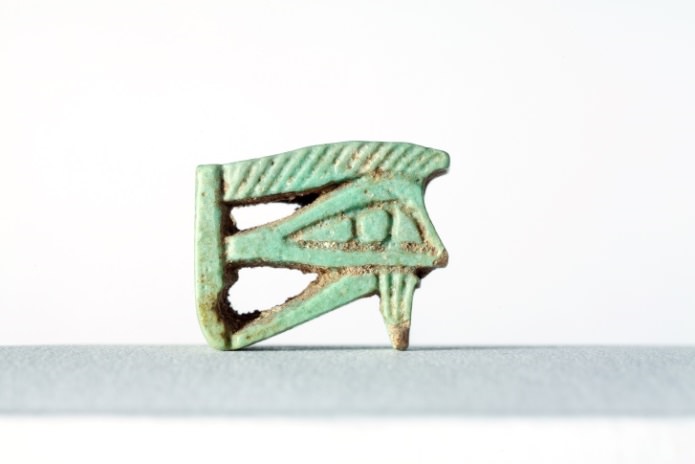
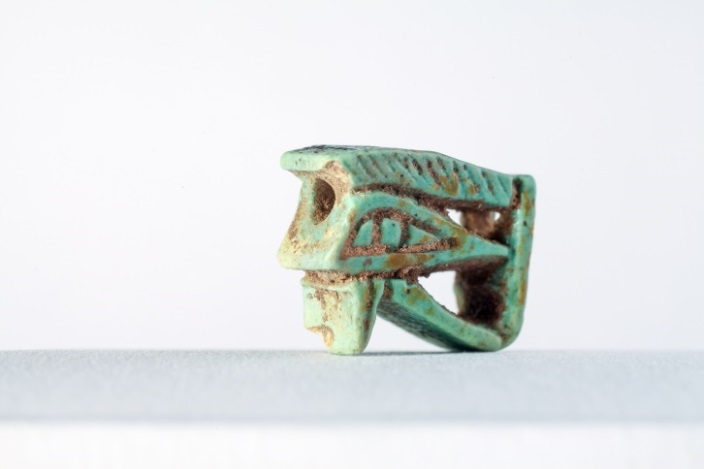
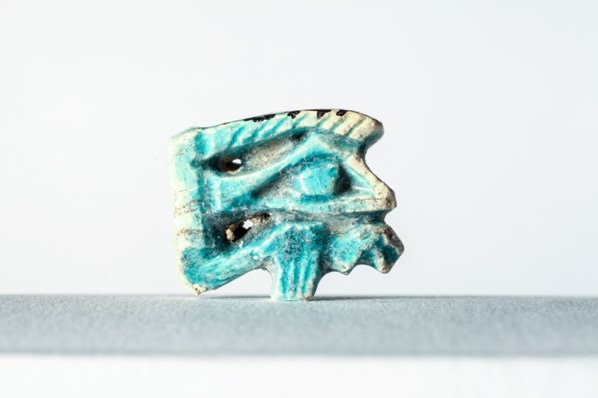
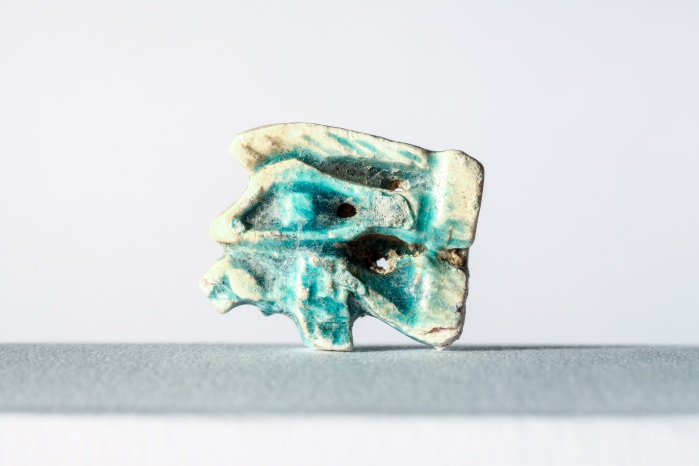

Amulets are the most common category of objects among the grave goods in Sardinia and in those of other Phoenician-Punic sites in the Mediterranean, among which Carthage. Many have been found in the necropolis and in the Tophet of ancient Sulky, where there were specialised workshops that produced them. Some were imported from Egypt.
The Udjat Eyes were mounted in necklaces together with other amulets and glass paste beads as well as other items of precious metal or hard stones. In addition to glass paste, they were also produced in glass paste, ivory, bone and hard stone and in several cases in precious metals. Among the latter, one in particular should be mentioned and which was also found in the necropolis of Sulky: the so-called amulet case, a small cylindrical container with the head of an Egyptian god, which contained a rolled thin foil inside, engraved with images concerning the judgment of the deceased or his journey to the afterlife (fig. 4).
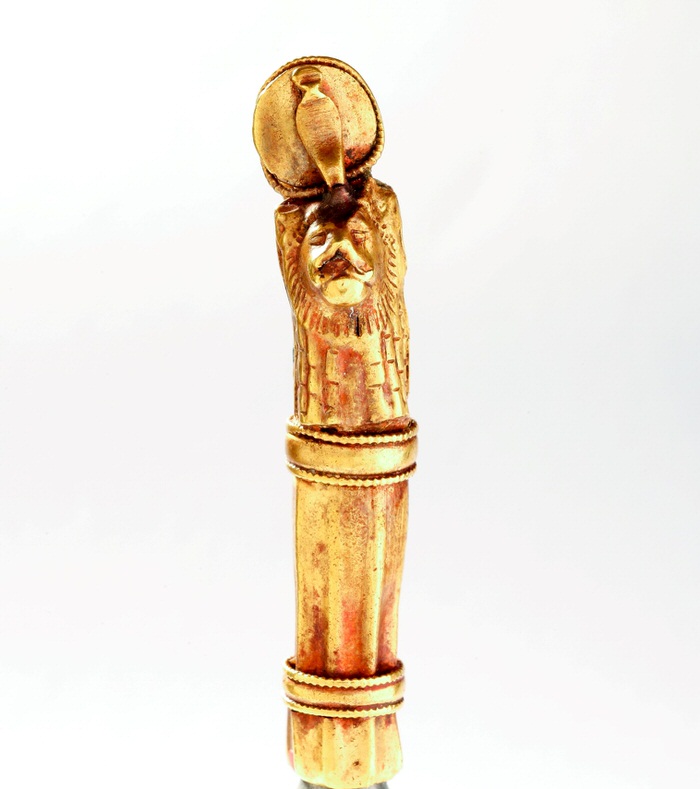
As occurred for the amulets from Carthage, the majority of those from Sardinia also represent Bes, Ptah-Pateco, uraeus, other animals, body parts and various apotropaic symbols (fig. 5).
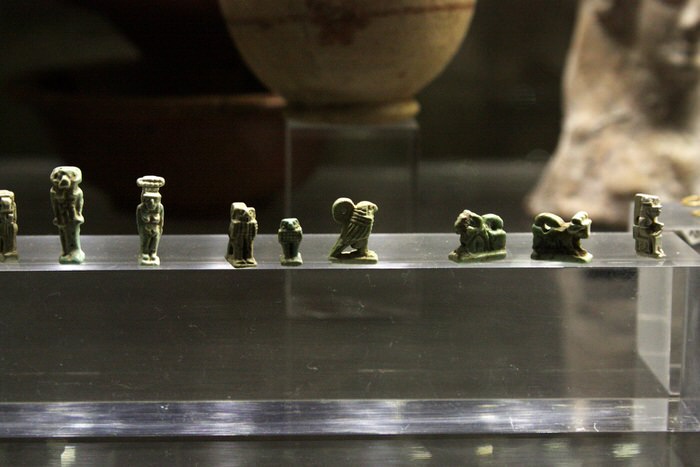
What were amulets for? The preference for magic iconography and symbolism of various types confirms that the function of the amulets was precisely to ensure protection from the evil forces which the deceased would meet along the long journey to reach his eternal home.
Bibliografia
- P. BARTOLONI, Il museo archeologico comunale “F. Barreca” di Sant’Antioco, Sassari 2007.
- P. CINTAS, Amulettes puniques, Tunis 1946.
- S. MOSCATI, Il mondo punico, Torino 1980.
- S. MOSCATI, Le officine di Sulcis, ROMA 1988.
- S. MUSCUSO, La necropoli punica di Sulky, in M. GUIRGUIS, E. POMPIANU, A. UNALI (a cura di), Quaderni di Archeologia Sulcitana 1. Summer School di Archeologia Fenicio Punica (Atti 2011), Sassari 2012.
- A. SECHI, Athyrmata fenicio-punici: la documentazione di Sulcis (CA), tesi di laurea, Università degli Studi di Pisa, a.a. 2005-2006.
- J. VERCOUTTER, Les objects égyptiens et ègyptisants du mobilier funéraire carthaginois, Paris 1945.

 VR
VR